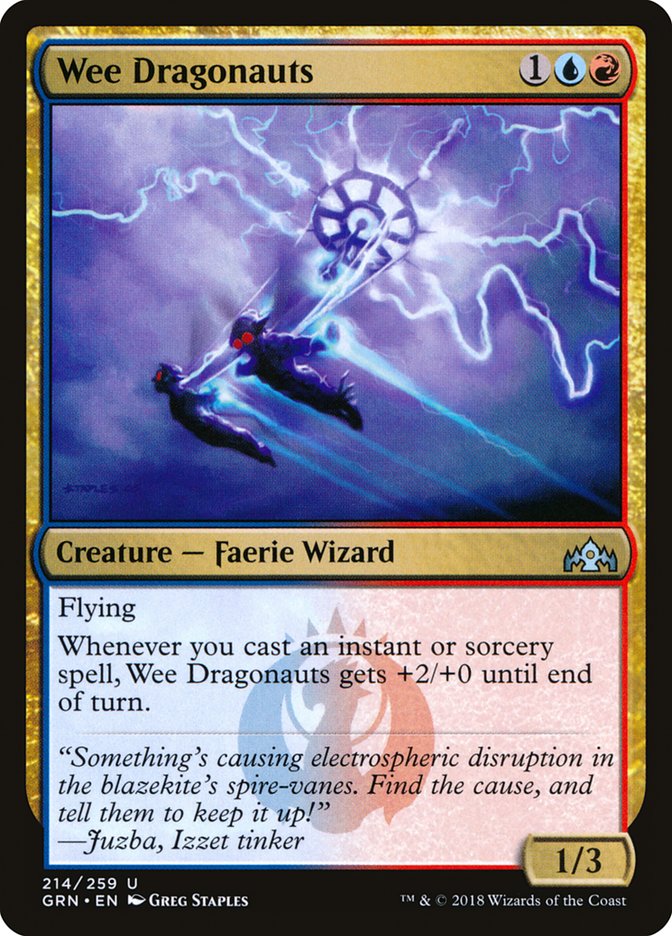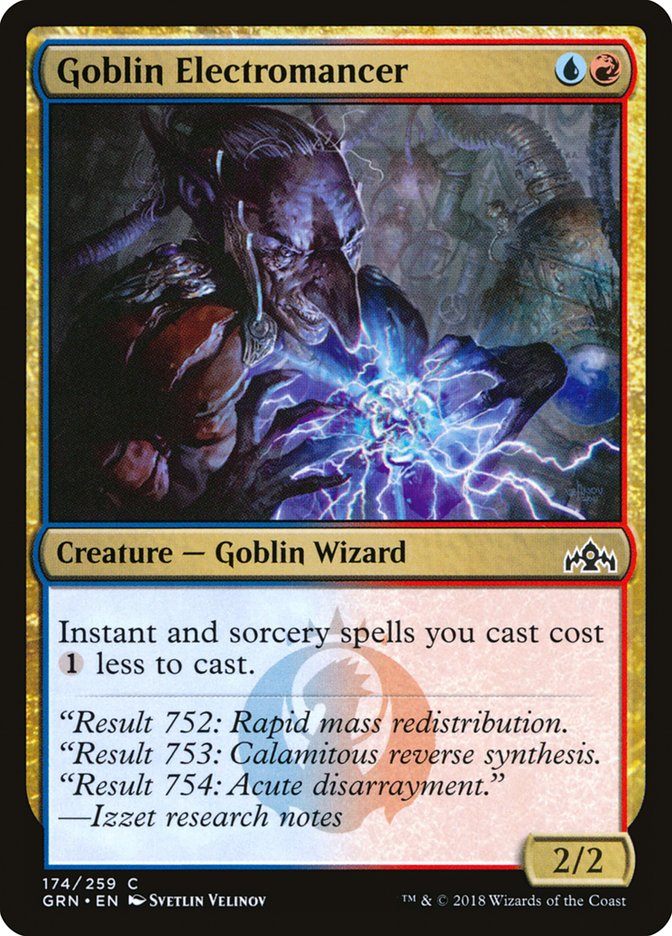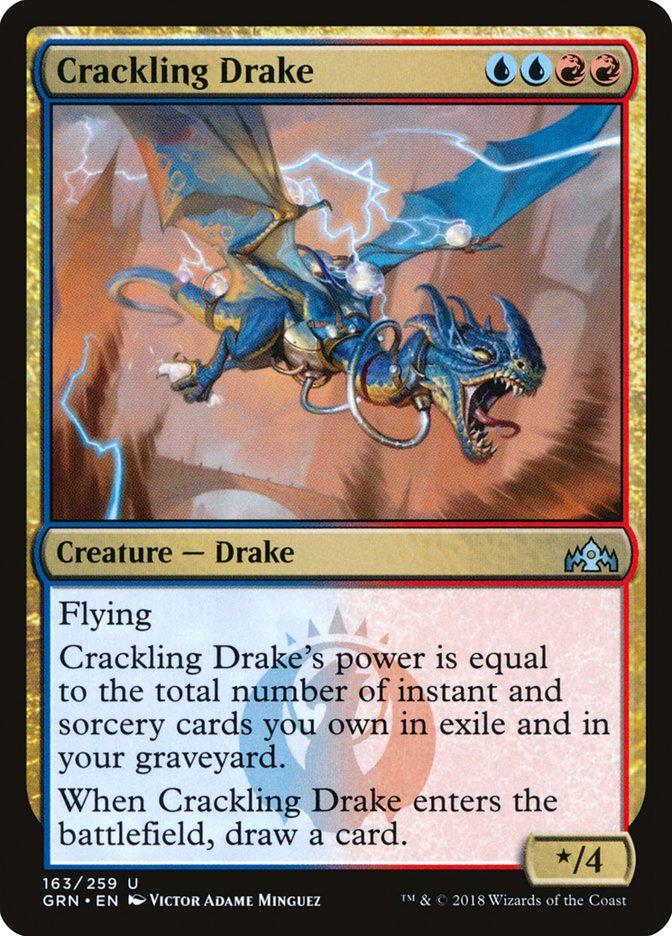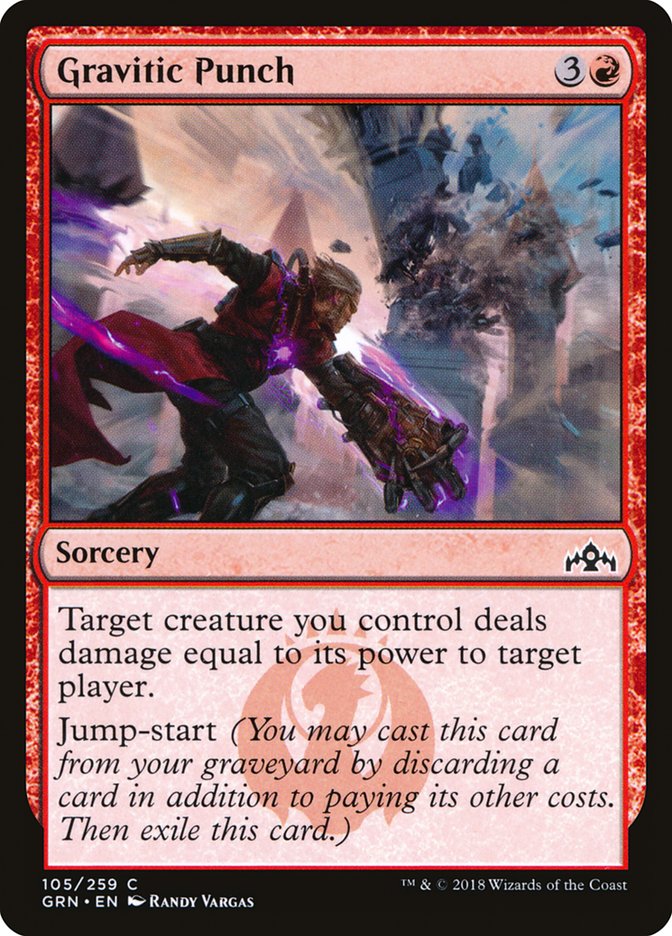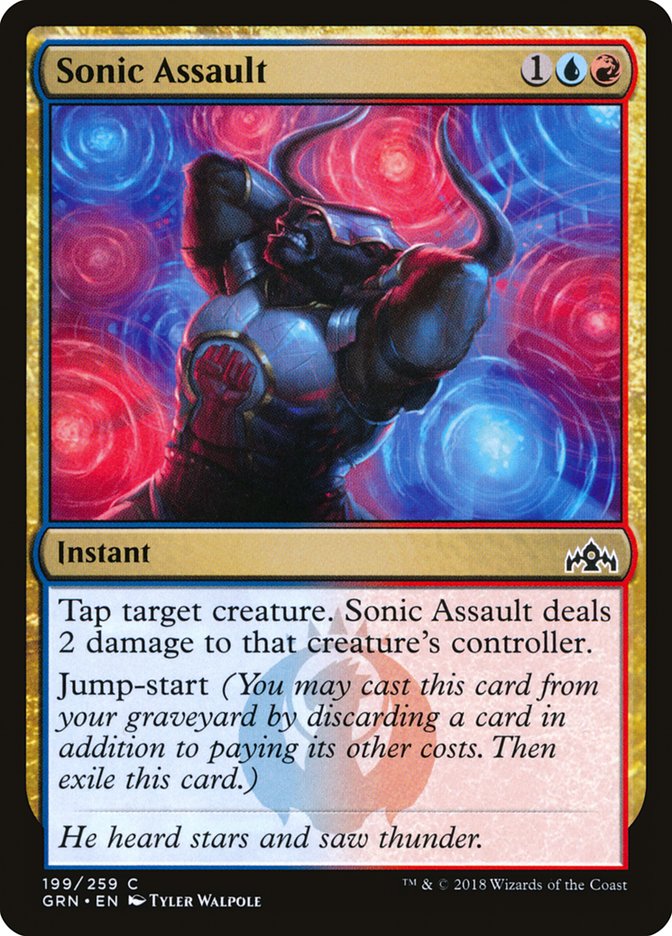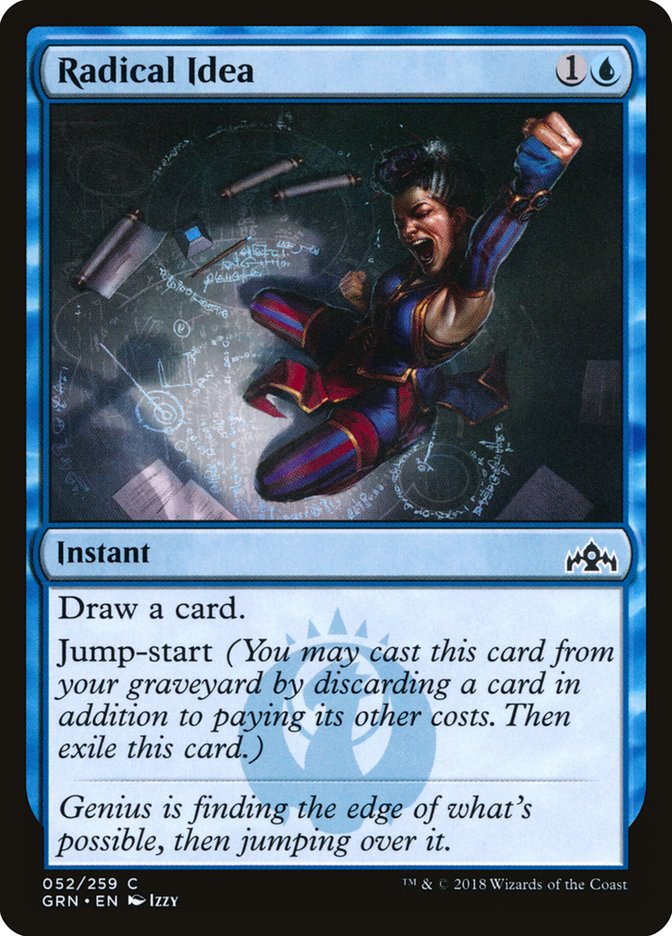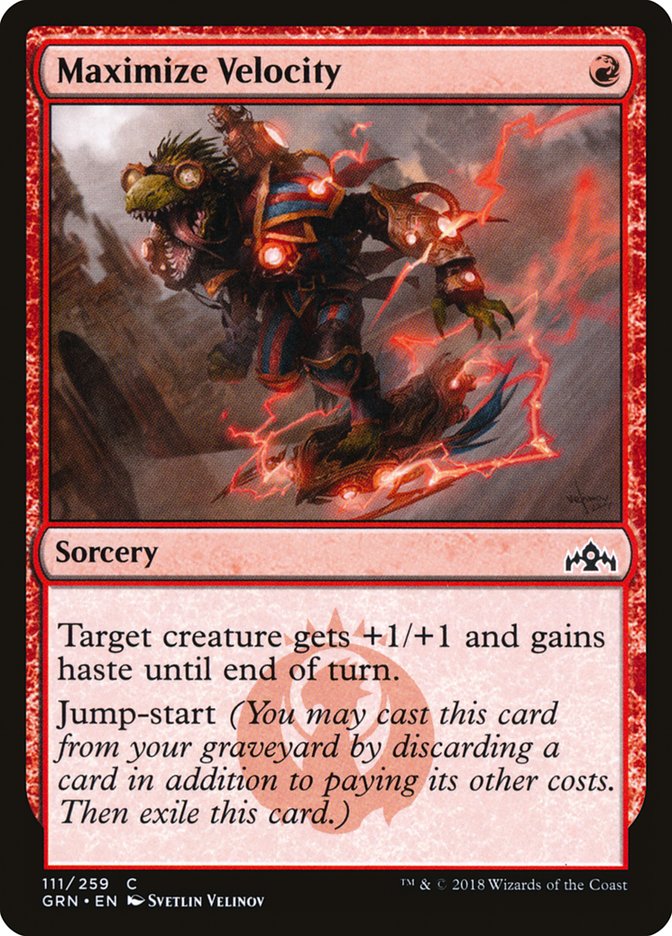Now that the entire set of Guilds of Ravnica has been previewed,
it’s time to get down and dirty with the new cards and new mechanics. The
mechanic that I was most excited for was jump-start. Flashback is an
all-time favorite, and I was curious as to how Wizards of the Coast would
design these cards. Unfortunately, the mechanic is not as abundant as I had
hoped, but it will still have a fairly large impact on the Limited
environment. The first thing to realize about the Izzet guild is that,
unlike Dimir with surveil, your Izzet decks will not be “jump-start decks.”
They will focus on spells, in general.
However, understanding how jump-start functions in the format as a whole,
as well as in the Izzet shell, is important for properly evaluating cards
and navigating a draft. Here are the obvious synergies to look at:
- You can put a jump-start card in your graveyard with surveil.
-
You can put a creature in your graveyard with jump-start to help
fuel undergrowth. - You can discard another jump-start card.
Plenty of decks will want the jump-start cards. I imagine Beacon Bolt will
be a sought-after card for surveil decks to abuse, and any deck that can
cast Chemister’s Insight will do so in a heartbeat. But what jump-start
cards will come all the way around the table?
None of these cards are exciting, and four of them would only particularly
excel in an aggressively-oriented strategy. Is Izzet actually supposed to
be an aggro deck that kills you immediately with Gravitic Punch and Wee
Dragonauts? It’s entirely possible! Let’s see what a deck like this might
look like:
Creatures (11)
- 2 Wee Dragonauts
- 2 Goblin Electromancer
- 1 Crackling Drake
- 2 Piston-Fist Cyclops
- 1 Electrostatic Field
- 1 Beamsplitter Mage
- 1 Smelt-Ward Minotaur
- 1 Fire Urchin
Lands (17)
Spells (12)

This is a theoretical deck of the format. It’s built mostly of commons and
zero rares. While it has a lot of the Izzet gold cards, one of the benefits
of formats with so many multi-color cards is that if you find your lane,
you can get rewarded since other drafters won’t really be looking for Wee
Dragonauts and Goblin Electromancer.
The first thing that I realized when looking at this deck is that it could
function with more creatures (and in fact, that might be necessary). The
Rise from the Tides deck from Shadows Over Inni strad required such a high spell density that you couldn’t really
win the game without the namesake card and hence, played very few
creatures. Jump-start is a mechanic that adds something unique to these
spell decks. It enables a higher creature count. You see, this deck may
have twelve spells, but seven of those spells have jump-start and can
trigger cards like Smelt-Ward Minotaur twice. This lets a deck play between
ten and fifteen creatures, but still function as if it had a ton of spells
in terms of getting mileage out of cards like Goblin Electromancer.
While this analysis is all interesting, is the above deck even good? To be
honest, I’m not sure. I wouldn’t be surprised if it packed a lot of punch,
but I also wouldn’t be surprised if it struggled to deal the full twenty
damage when the opponent is interacting.
So, what happens if we ignore the jump-start cards that nobody wants and
play an Izzet deck that’s more controlling and focused on card quality?
Creatures (11)
- 1 Goblin Electromancer
- 1 Wall of Mist
- 2 Murmuring Mystic
- 2 Dimir Informant
- 1 League Guildmage
- 2 Watcher in the Mist
- 1 Piston-Fist Cyclops
- 1 Book Devourer
Lands (17)
Spells (12)

The power-level of the deck above is through the roof and it doesn’t even
have many rares. The majority of the cards synergize and the removal is
plentiful. My one problem with this deck is that it’s a little light on
ways to win the game so If you’re playing against a deck that’s chock full
of Murder variants, you might be in trouble. That said, I think I like this
version a lot more than the previous one but it may be difficult to draft.
The deck has cards that are contested across archetypes and probably won’t
wheel.
What now? Izzet good or what?
Well, as demonstrated above, there are two ways to take your Izzet decks.
You can attempt to be aggressive, and you can attempt to play for the long
game. My gut is telling me that the long game is a better plan, but I would
love to be wrong. I think that the fixing is so good in this format that
considering how decks function in three colors will be important. With
these thoughts in mind, I believe the following:
-
Grixis control decks that are either base Dimir or Izzet will be
quite good. I imagine that they will rarely be just two-color decks
and that they’ll utilize both surveil and jump-start to good
effect. -
If you want to attempt a spells-oriented aggro deck, it may be
better to consider the deck in a Jeskai shell. Maximize Velocity
and Maximize Altitude work quite well with mentor along with a lot
of the aggressively-oriented jump-start spells, so there could be
something there. However, I think the straight Izzet Aggro deck I
demonstrated in this article needs too much to go right.


